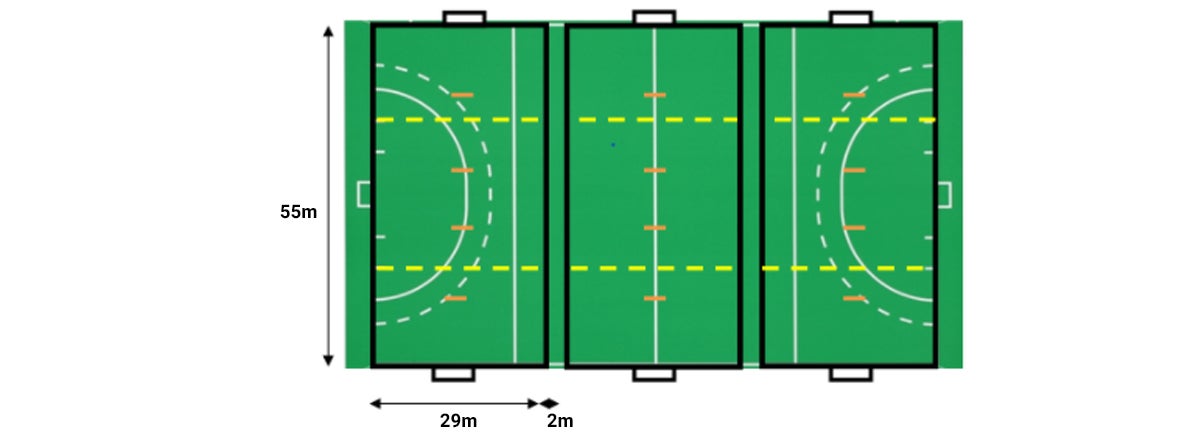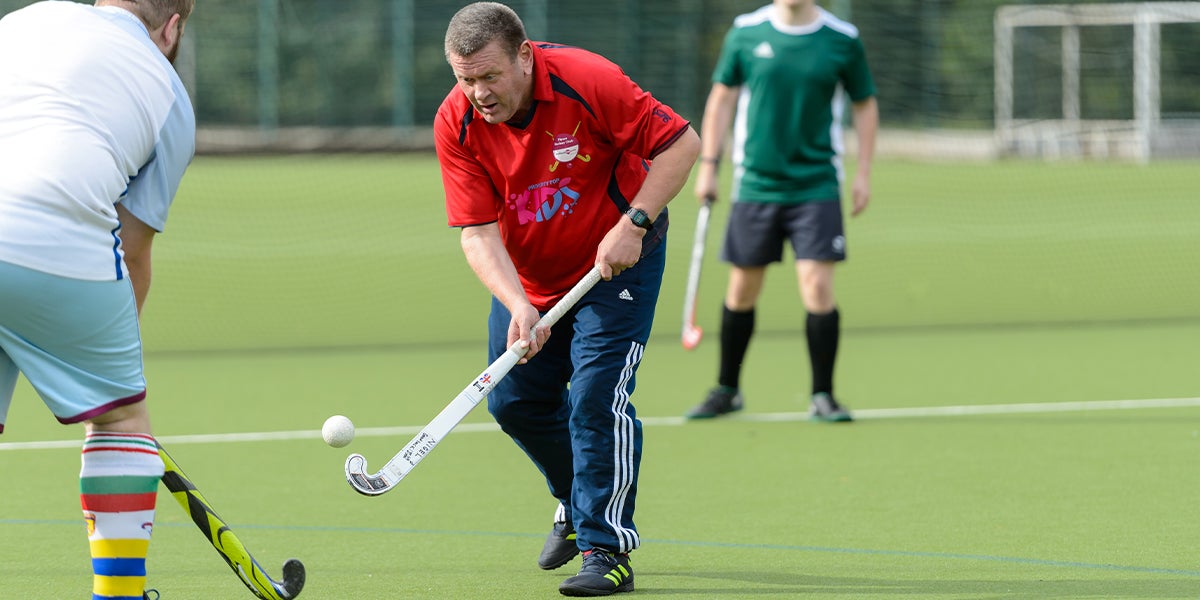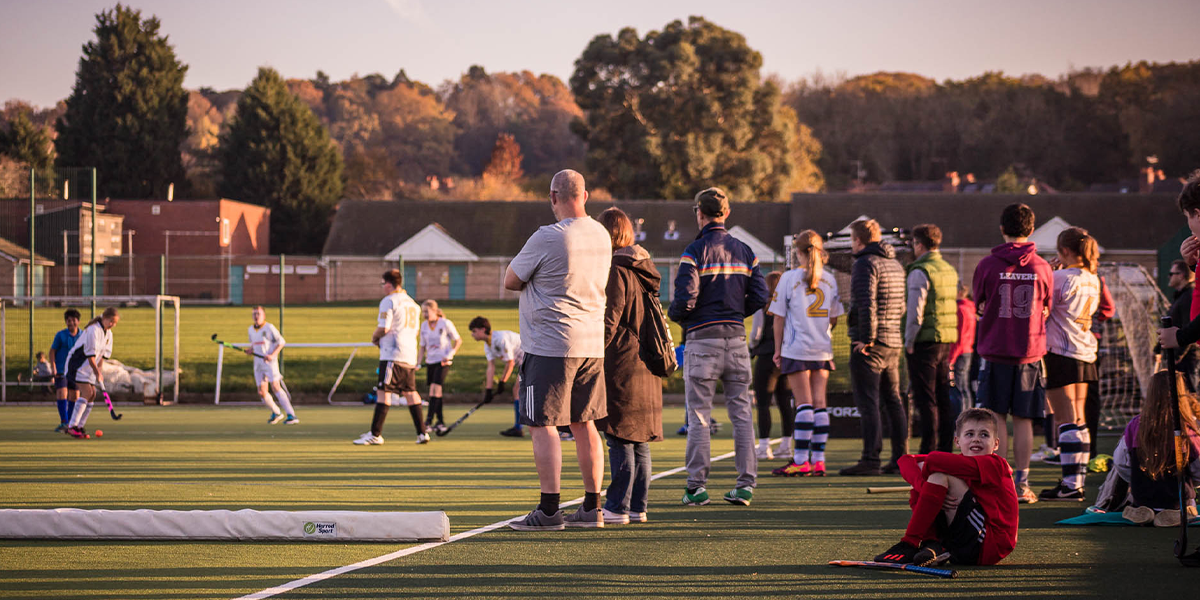Small sided hockey provides players with an authentic experience of the game, more touches of the ball and ultimately provides ‘games’ which players love.
Although we are suggesting playing six-a-side on a third of a pitch, you can play the game with the number of players available. The game can be played with or without goalkeepers and the rules can be adapted depending on the audience.
Small sided hockey can support clubs to make efficient use of pitch space outside of core club sessions.
-
Depending on how and when you structure your small sided hockey sessions this format can be attractive to all regardless of age or experience, for example;
- Players who want to get their hockey fix but are unable to commit to 11-a-side
- New players or those who are returning to the sport after time away
- Current members who want to play more or at other times during the week
- Summer league players who want to continue playing all year round
Small sided games are also great to integrate into other programmes like Back to Hockey as with more touches of the ball players feel more involved in the game and have more opportunities to develop their skills.
-
- Great for training, ‘Pay and play’ nights, intra club games and Summer Hockey: People fundamentally love playing games! The culture of hockey is moving towards one which has an emphasis on ‘games not drills’. If your club is struggling with sourcing a coach to lead a session then organising small sided games could be the perfect way to keep people playing.
- Cater for more players: Splitting your pitch into thirds as opposed to two halves means that you can increase the number of players playing at any one time by circa 50%.
- Flexibility: Although we are suggesting adults play six-a-side, you can adapt the game depending on the audience, space available and number of players attending.
- Additional Income: Organising a regular 'Pay and play' night or small sided corporate league can be a big income generator for clubs. Especially if used for summer league as more teams and players can be playing at the same time.
- Aids players' development: Reducing the amount of players per side increases the average amount of time players have on the ball compared to the 11-a-side version of the game which players have fed back helps to develop their abilities.
- Provides a great experience: 93% of current hockey players have fed back that the 6-a-side version of the game feels like an authentic hockey experience.
-
Clubs have fed back that they want to be able to quickly and cheaply split their pitch up and cater for more players. Here are some ideas as to how to do so:
- Use throw down lines to mark out scoring zones. They are low cost, can be used for wider hockey coaching and can be put down and taken up very quickly!
- Cable ducting can be a low cost way of adding barriers between pitches which can be easily stored at the side of the pitch when not in use.
- Think about how much space your players require, could Back to Hockey or junior sessions take place on a quarter of a pitch?
- Players want to ultimately play the game they love and recognise. Look to keep the authenticity of the rules and adapt them according to the audience playing, i.e. shorter games for novice players and fewer rules/players-a-side for younger people.
- Using a rectangular scoring zone measuring from the injection spots means you can quickly set them up and they are a similar distance surface area wise to a ‘D’/ Circle.
- Maximise the pitch time you have by playing in short sharp bursts (10 minute quarters), players will get a more intense work out with small sided games.
- ‘Challenges’ are a great way to keep the game flowing for any offence caused within the ‘scoring zone’ which would normally equate to a penalty corner, for example:
- One attacking player starts with the ball around 5 meters outside the scoring zone.
- If you have a goalkeeper they start on the goal line, if not start with a defending player around 3 meters inside the scoring zone.
- Position all other players on the half way line, as soon as the attacking player moves with the ball these players can re-engage with the game.

-
- Small Sided Hockey Rules: Suggested rules to get you started with small sided hockey.
- Marketing Portal - An online portal where you can personalise marketing materials like posters and social media content to support with promotion of your sessions.
- Club Development Manager - Don’t forget to catch up with your local Club Development Manager to share your ideas and they can provide bespoke advice and guidance.
-
If you would like to discuss how to incorporate Small Sided Hockey at your club please get in touch here.
If you would like to ask a question or need further support please get in touch.
Contact us


